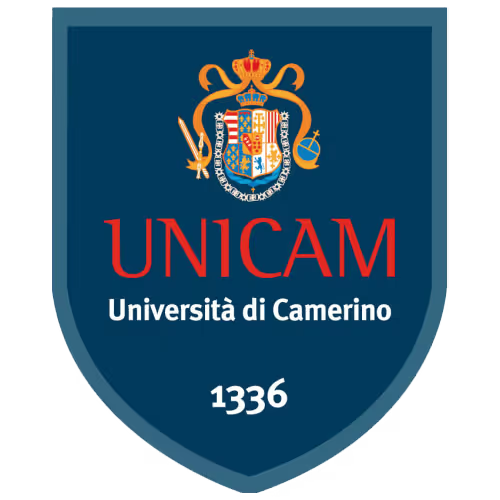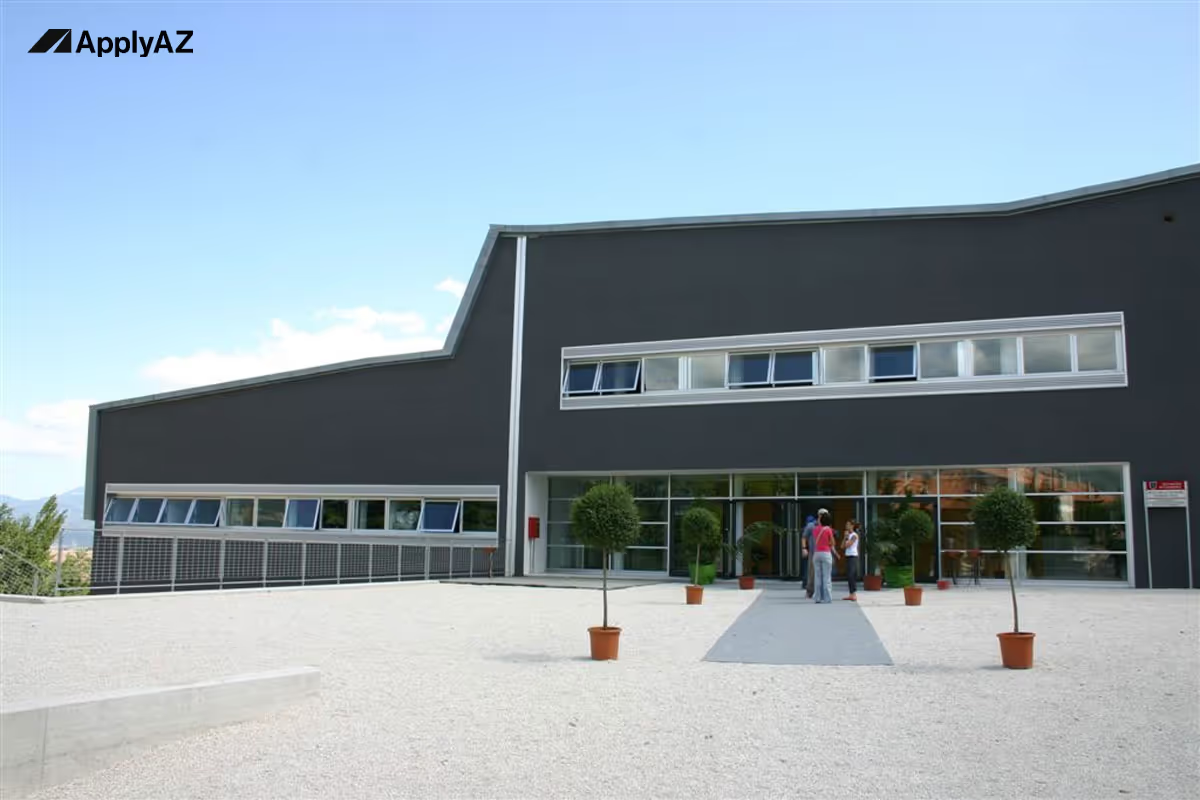Heading
Heading








University of Camerino
A historic campus with modern research ambitions
Founded in 1336, the University of Camerino is one of Europe’s oldest public institutions. Despite its age, the university keeps pace with global innovation through five specialised schools: Architecture and Design, Biosciences and Veterinary Medicine, Law, Pharmacy, and Science and Technology. International rankings often highlight its research impact in chemistry and computer science, while the teaching environment earns high student‑satisfaction scores. Several master’s degrees now run fully in English, adding to the growing list of English‑taught programs in Italy and giving you the chance to study in Italy in English while paying regulated state fees.
Academic highlights
- Chemistry and Advanced Materials laboratories recognised by European research councils.
- Computer Science department leading Horizon projects on cybersecurity and artificial intelligence.
- Veterinary Medicine hospital offering hands‑on clinical rotations with small and large animals.
- Architecture school nestled in a UNESCO‑listed region, perfect for heritage‑restoration studies.
Living and learning in Camerino
Camerino is a small medieval town in the Marche region. Its compact size means lecture halls, dorms, cafés, and sports facilities all sit within a fifteen‑minute walk. With roughly 6,000 residents and 8,000 students, the local economy welcomes student life. Rents for shared flats average €200–€250 per month, and university cafeterias serve balanced meals for under €4. The Apennine setting keeps summers warm (about 28 °C) and winters cool but sunny (around 4 °C), ideal for hiking or skiing between study blocks. Buses link the town centre to railway hubs, and a discounted student pass covers regional travel.
Cultural events—classical concerts in Renaissance halls, food festivals celebrating truffles and olives, and weekend language exchanges—make it easy to integrate. Because classes are in English, international students quickly build mixed friendship groups, then pick up conversational Italian during everyday errands.
Job prospects and internships
While Camerino itself is small, its network of partnerships spans the Marche manufacturing belt and national research centres. Key sectors include:
- Pharmaceuticals and biotech – regional plants host internships for pharmacy and chemistry students.
- Agri‑food technology – nearby companies refine food‑quality analytics and sustainable packaging.
- Advanced manufacturing – robotics and composite‑material firms collaborate with engineering labs on Industry 4.0 projects.
- Digital services – local start‑ups use cloud and AI solutions, offering roles for computer‑science graduates.
Internship agreements allow you to earn thesis credits and apply classroom theory to real problems. Many positions accept English as the working language and pay modest stipends, easing living costs. After graduation, alumni find roles across Italy and wider Europe, helped by the university’s career office and Erasmus+ research networks.
Funding and scholarships
Being part of public Italian universities, Camerino keeps tuition predictable—generally €900–€2,000 a year depending on household income. International applicants can compete for the DSU grant, which may waive fees entirely, provide rent support, and add a yearly stipend of up to €7,000. Merit scholarships for high GPA or language scores further reduce expenses, making the overall package competitive with tuition‑free universities Italy references.
Why choose Camerino
- Intimate learning: small cohorts mean professors know your name and guide your research closely.
- Cost advantage: affordable housing, DSU grant opportunities, and low campus fees.
- Research access: modern labs open to master’s students from the first semester.
- Lifestyle balance: safe town, clean air, mountain sports, and rich cultural heritage.
Finish your classes on Friday, hike the Sibillini peaks on Saturday, and present your polymer‑science poster at a European conference on Monday—that’s the Camerino rhythm.
In two minutes we’ll confirm whether you meet the basic entry rules for tuition-free, English-taught degrees in Italy. We’ll then quickly see if we still have space for you this month. If so, you’ll get a personalised offer. Accept it, and our experts hand-craft a shortlist of majors that fit your grades, goals, and career plans. Upload your documents once; we submit every university and scholarship application, line up multiple admission letters, and guide you through the visa process—backed by our admission-and-scholarship guarantee.
Mathematics and Applications (LM‑40) at University of Camerino
1. First look: where pure ideas meet real‑world impact
The Mathematics and Applications LM‑40 programme merges theoretical rigour with practical modelling. Within the first 100 words you already notice how English‑taught programs in Italy let you study in Italy in English while paying public‑university fees. This course spans algebra, analysis, numerical methods, statistics, and modern data science, then tests them in finance, cryptography, and biomedical engineering. Small classes (normally 25 students) mean you debate proofs with professors, not teaching assistants. Guest lecturers from European research institutes feed industry‑level projects into seminars, so your problem sets mirror job briefs, not textbook drills.
2. Why choose English‑taught programs in Italy for mathematics
Italy produced Fibonacci, Galileo, and Fermi—names carved on the very pillars of science. Modern departments continue that tradition at a fraction of the price of many Western peers. Because University of Camerino belongs to the network of public Italian universities, tuition scales with family income. Add the DSU grant (a flagship of scholarships for international students in Italy) and your cost can match some figures quoted by tuition‑free universities Italy mentions, yet you still access high‑performance clusters and international conferences. All lectures, lab notes, and exams are delivered in English, so your mathematical vocabulary becomes export‑ready.
3. Curriculum map: 120 ECTS over four engaging semesters
Semester 1
- Functional Analysis – Banach and Hilbert spaces, spectral theorems; weekly proofs uploaded to Git repositories.
- Probability Theory – σ‑algebras, measure, martingales; coding labs simulate random walks.
- Programming for Mathematicians – Python, Julia, and C++ optimisation; assignments benchmark ODE solvers.
Semester 2
- Numerical Linear Algebra – sparse matrices, Krylov methods, error analysis.
- Partial Differential Equations (PDEs) – existence, uniqueness, and finite‑element discretisation.
- Elective A – pick Cryptography, Actuarial Models, or Quantum Computing Basics.
Semester 3
- Stochastic Processes – Markov chains, Brownian motion, Ito calculus; projects price exotic options.
- Optimisation and Control – convex analysis, Lagrange duality, model predictive control for robotics.
- Elective B – options: Machine Learning Theory, Computational Fluid Dynamics, or Algebraic Topology.
Semester 4
- Research Internship (18 ECTS) – 450 hours in a company or lab; tasks feed the thesis.
- Master’s Thesis (30 ECTS) – original research targeting journal submission.
Each bullet stays under 80 words to keep reading smooth.
4. Teaching model: flipped classrooms and weekly sprints
Professors post ten‑minute videos and concise reading lists before each lecture. Live sessions then pivot to:
- Black‑board derivations of theorems you attempted at home.
- Pair programming where you and a classmate refactor Monte‑Carlo code.
- “Fish‑bowl” seminars: two students discuss a proof while peers comment in rings.
- Sprint demos every four weeks—agile presentations that sharpen concise English explanations and LaTeX skills.
Feedback cycles are short: problem‑set rubrics arrive within 72 hours, so misconceptions never snowball.
5. Research infrastructure and specialised labs
- High‑Performance Computing Cluster – 10 000 CPU cores, 200 GPUs, and JupyterHub notebooks preloaded with TensorFlow, FEniCS, and SageMath.
- Mathematical Finance Lab – Bloomberg terminals, RStudio Server, and MATLAB licences for option pricing and risk metrics.
- Cryptography Suite – FPGA boards for post‑quantum algorithms, side‑channel analysis benches, and secure coding sandboxes.
- Visualisation Studio – large interactive screens for topology simulations, volumetric data, and VR field lines.
Lab safety and data‑privacy training occur in week 1; booking uses an English dashboard.
6. Internship routes: applying theory beyond campus
The 18‑credit internship embeds you in:
- Quant desks at European banks modelling volatility surfaces.
- Biostatistics units measuring gene‑expression variance in oncology trials.
- Aerospace R&D teams simulating turbulent flows using finite‑element libraries.
- National cryptology centres benchmarking lattice‑based signatures.
Weekly mentor calls set objectives, and midpoint reviews adjust scope—mirroring industry agile.
7. Funding toolkit: DSU grant and layered aid
DSU grant snapshot
- Tuition waiver, meal vouchers, rent subsidy, and up to €7 000 stipend.
- Open to EU and non‑EU students below income thresholds.
- Renewal tied to 30 ECTS per year and passing grades.
Additional scholarships for international students in Italy
- Merit fee reductions (up to 100 percent) for top bachelor GPAs.
- Teaching assistantships (150 paid hours) guiding undergraduates.
- Erasmus+ stipends supporting a term at TU Munich or KU Leuven.
- Research fellowships under EU Horizon projects in optimisation or quantum tech.
Combine these sources, and net expense can rival tuition‑free universities Italy advertises—without sacrificing lab access.
8. Career outcomes: data‑verified success
Department records show 93 percent placement within six months. Alumni roles:
- Data scientist – building probabilistic models in health‑tech start‑ups.
- Quantitative analyst – coding option‑pricing algorithms in London banks.
- PhD candidate – researching geometric analysis in German Max Planck institutes.
- Cryptography engineer – auditing post‑quantum schemes for EU agencies.
- Operations‑research consultant – optimising logistics networks for multinational firms.
Employers highlight graduates’ dual strengths: rigorous proofs and production‑ready code.
9. Admissions path and ApplyAZ guidance
- Prerequisites – bachelor’s in mathematics, physics, or engineering with real analysis, algebra, and basic programming.
- English proof – IELTS 6.5, TOEFL 90, or prior English‑medium degree.
- Document package – transcript, CV, passport, motivation letter.
- Online interview – 20 minutes probing your theorem familiarity and coding habits.
10. Key advantages recapped
- Complete English teaching inside a respected Italian public institution.
- Modular curriculum covering analysis, statistics, and modern computing.
- Small cohorts for real mentorship and instant feedback.
- Advanced labs in HPC, finance, cryptography, and visualisation.
- Generous DSU grant reducing fees toward tuition‑free territory.
- Strong placements across academia, finance, and tech.
Ready for this programme?
If you qualify and we still have a spot this month, we’ll reserve your place with ApplyAZ. Our team will tailor a set of best-fit majors—including this course—and handle every form and deadline for you. One upload, many applications, guaranteed offers, DSU grant support, and visa coaching: that’s the ApplyAZ promise. Start now and secure your spot before this month’s intake fills up.

They Began right where you are










